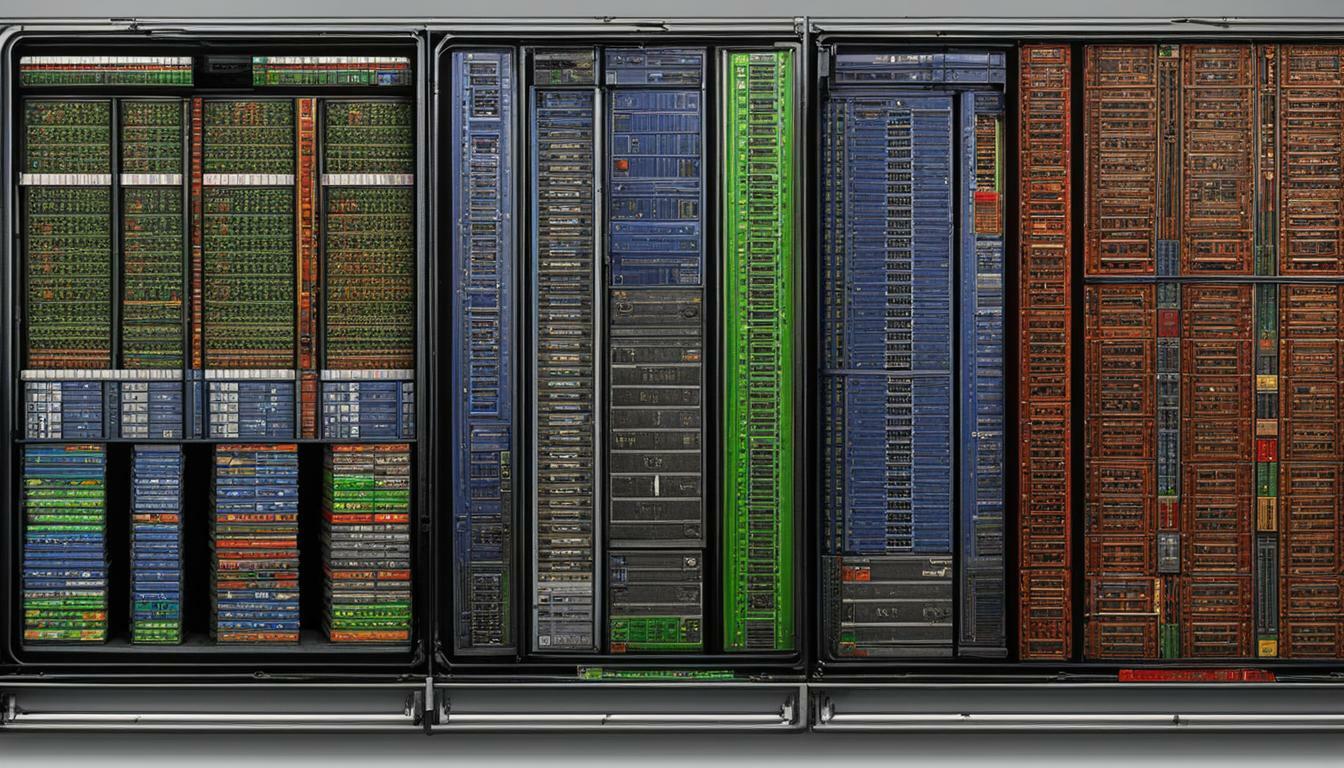Introduction
Have you ever wondered about the fascinating world of databases and how they play a crucial role in managing and organizing data? Well, buckle up because we’re about to dive into the intriguing realm of flat file and relational databases. These two types of databases have distinct characteristics that set them apart, making it essential to understand their differences.
Whether you’re a tech enthusiast or just curious about how information is stored, this article will enlighten you on the unique aspects of each database type.
The Definition: Flat File vs. Relational Databases
Let’s start by clarifying what we mean when we talk about flat file and relational databases. A flat file database, also known as a tabular database, is essentially a simple structure used for storing data. Picture it like an old school spreadsheet where information is arranged in rows and columns. This type of database does not have any complex relationships between tables, meaning there are no elaborate connections or associations present. Now, onto relational databases – these are the powerhouses when it comes to managing vast amounts of data efficiently. Unlike their flat file counterparts, relational databases consist of multiple tables that are interconnected through relationships known as keys. These keys establish connections between tables based on common attributes or values, allowing for more robust data management.
The Importance: Understanding the Differences
Why should you bother understanding the differences between flat file and relational databases? Well, let me put it this way – imagine trying to build a skyscraper without knowing the difference between cement and steel; it would be an architectural disaster waiting to happen!
Similarly, if you’re working with data or planning to venture into the realm of application development or data analysis, comprehending these distinctions is paramount. An understanding of these two types of databases equips you with knowledge about which database structure would be best suited for a specific task or project.
It allows you to make informed decisions on how to organize your data, retrieve it efficiently, and ensure its integrity. So, whether you’re an aspiring coder, a data scientist, or even just a curious soul seeking knowledge, unraveling the disparities between flat file and relational databases will undoubtedly broaden your horizon in the world of data management.
Flat File Databases
Definition and Characteristics
When it comes to understanding databases, one must become acquainted with the concept of flat file databases. In its simplest form, a flat file database is like a digital version of your grandmother’s old recipe box, where each recipe card represents a piece of data.
Quite similar to that, flat file databases consist of a single table or spreadsheet-like structure without any complex relationships between the different pieces of information. In other words, it’s as straightforward as it gets – just rows and columns.
Advantages of Flat File Databases
One significant advantage that flat file databases offer is their ease of creation and management, particularly for small-scale projects. Since they don’t involve intricate relationships or multiple tables to worry about, even those who are not seasoned database administrators can dip their toes into managing data with relative ease. As a result, startups or individuals working on personal projects find them particularly convenient.
Moreover, with their simple structure comes quick data retrieval. Imagine fetching information from a spreadsheet; it doesn’t take much effort or time because everything is right there in front of you.
Similarly, in flat file databases, fetching data is swift and efficient due to their straightforward format. So if speed matters in your project – consider this an advantage!
Limitations of Flat File Databases
While flat file databases have their perks, they also come with limitations that you need to be aware of before diving into them headfirst. One crucial drawback is the lack of data integrity and redundancy control mechanisms.
Since all the data resides in one place without any checks or validations in place (like primary keys or foreign keys), maintaining consistent and error-free records can become challenging. Additionally, when it comes to scalability and handling complex data structures, flat file databases fall short compared to other options like relational databases (which we’ll explore later).
As your project grows and the amount of data expands, a simple flat file format may no longer be sufficient to efficiently manage and organize your information. Therefore, it’s crucial to assess the scalability needs and complexity of your project before deciding on a database solution.
While flat file databases excel in simplicity and quick data retrieval, they do have limitations when it comes to ensuring data integrity, controlling redundancy, and handling complex structures. Understanding these characteristics is essential for making informed decisions about the appropriate database system for your specific requirements.
Relational Databases
Definition and characteristics
When it comes to managing complex data structures, relational databases are the go-to solution. Unlike flat file databases, relational databases are organized into multiple tables that are interconnected through relationships or keys. Each table represents a specific entity, and the relationships between these tables allow for efficient data retrieval and manipulation.
Furthermore, relational databases adhere to the principles of relational algebra, which provide a solid foundation for data management. This algebraic approach ensures that data is stored in a consistent manner and enables powerful operations such as joins, filters, and aggregations.
Advantages of relational databases
One of the key advantages of using a relational database is its ability to ensure data consistency through normalization techniques. Normalization involves breaking down large tables into smaller ones and eliminating redundant data through a process known as normalization forms or NFs.
The most common normalization forms include first normal form (1NF), second normal form (2NF), and third normal form (3NF). These forms help in reducing redundancy by organizing data efficiently.
In addition to maintaining data integrity, relational databases offer flexibility in handling complex relationships between tables. This is achieved through the use of primary keys and foreign keys that establish connections between related tables.
Relational databases support various types of relationships such as one-to-one, one-to-many, and many-to-many relationships. Such flexibility allows for efficient querying across multiple tables while ensuring accurate results.
Limitations of relational databases
While there are many benefits to using relational databases, they also come with certain limitations that need to be considered during design and implementation stages. One main limitation is the complexity involved in designing the database schema and managing relationships between tables.
Designing an effective schema requires careful consideration of entities, attributes, primary keys, foreign keys, indexes, constraints, etc., which can be challenging for those less experienced in database design. Additionally, managing relationships between tables can become cumbersome as the number of tables and complexity of relationships increase.
Another limitation is performance issues when dealing with large-scale datasets. As the amount of data grows, relational databases may experience slower query performance due to the need to process complex join operations across multiple tables.
Careful indexing and query optimization techniques are necessary to mitigate these performance challenges and ensure efficient data retrieval. Relational databases offer significant advantages in terms of data consistency, flexibility, and powerful query capabilities.
However, they require careful planning during schema design and may encounter performance challenges when handling large volumes of data. By understanding these characteristics and limitations, one can make informed decisions about choosing the right database solution for their specific needs.
Differences between Flat File & Relational Databases
Data Structure & Organization
When it comes to the structure and organization of data, flat file and relational databases are as different as night and day. Flat files are like that one-person band you see on the street—they’re simple, straightforward, and consist of a single table. All the data is crammed into this one table like a jigsaw puzzle with no missing pieces.
It’s easy to access because you don’t have to navigate through different tables or worry about relationships between them. On the other hand, relational databases are more like an orchestra with multiple sections playing harmoniously together.
Instead of just one table, we have multiple tables that are linked via relationships (known as keys). Each table represents a specific entity or concept in your database schema.
The relationships between these tables allow you to slice and dice your data in various ways, creating complex connections that can handle even the trickiest of scenarios. So if your data is more like a symphony than a solo act, relational databases offer the flexibility you need.
Data
Now let’s talk about what really matters—the data itself! In flat file databases, all the information resides within that single table we mentioned earlier.
So if you’re dealing with a small dataset or simple project where information doesn’t rely on complex relationships, flat files can be quick and efficient for retrieval purposes. Think of it as finding your car keys when they’re right there on the coffee table—easy peasy!
Relational databases take things up a notch by keeping related information separate but still intrinsically connected through those lovely relationships we mentioned earlier. This means you can store large volumes of complex data without losing your sanity in the process.
For example, imagine managing an e-commerce website where each customer has multiple orders with varying products—they’ll all be neatly stored across different tables, yet linked together through keys. So when you need to find out which customer bought those cute cat slippers, relational databases will handle it like a pro.
Conclusion
In the battle of flat file vs. relational databases, both have their strengths and weaknesses.
Flat files are perfect for simpler projects where data is uncomplicated and relationships are minimal. They offer quick and easy management but lack the scalability and flexibility required for more complex data structures.
On the other hand, relational databases shine when you have vast amounts of data to organize and relationships that resemble a web of interconnectedness. They may require more initial effort to design and manage, but they offer superior data consistency, structure, and handling capabilities.
So whether you’re rocking a solo project or conducting an elaborate symphony of data, understanding the differences between flat file and relational databases will empower you to make informed decisions that suit your specific needs. Embrace the power of organized information—let your data sing!
 Skip to main content
Skip to main content
